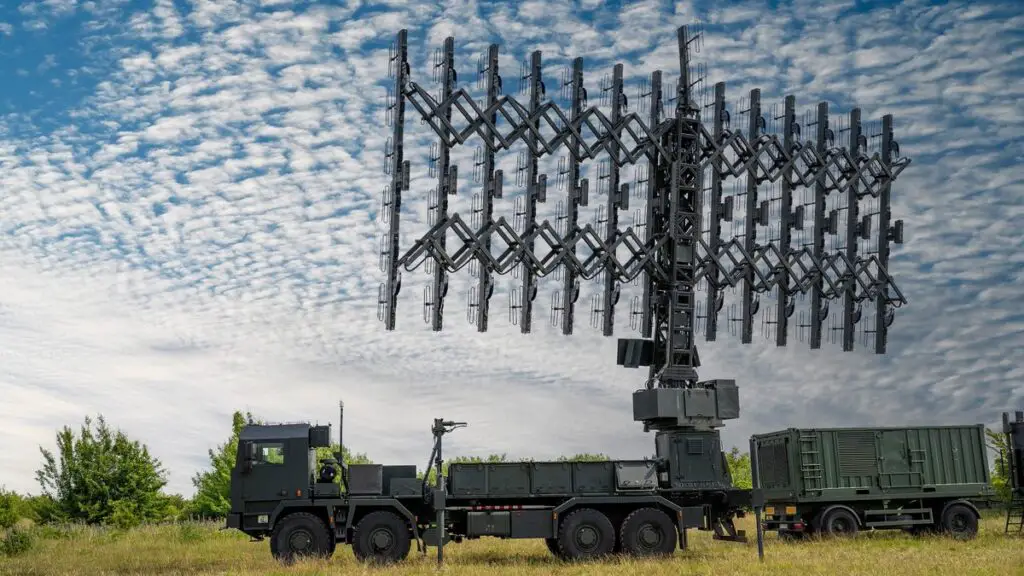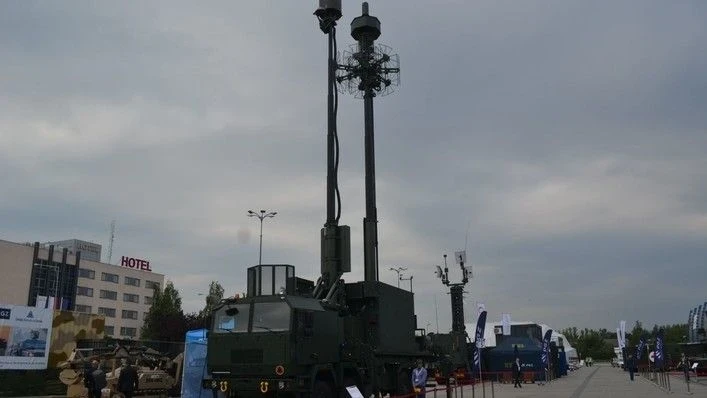Poland is building an integrated and multilayered air defence system to safeguard its forces and territory as part of the Pilica, Narev, and Vistula initiatives. The system has been designed to eliminate sophisticated adversary aircraft, such as stealth aircraft (Su-57), ballistic or quasi-ballistic missiles (Iskander, Kinzhal), and flat-trajectory missiles (Ch-55, Ch-101/102).
Poland’s anti-missile defence will be equipped predominately with PAC-3 MSE (Missile Segment Enhancement) missiles and American Patriot systems. Twelve sophisticated Lower Tier Air and Missile Defence Sensors (LTAMDS) radar systems will be charged with guiding the missiles. These recently developed radars offer considerable emitting power and are exceptionally potent. LTAMDS is specifically engineered to direct missiles towards exceedingly complex targets, including stealth aircraft or hypersonic projectiles.
Raytheon reported completing the second live test of LTAMDS at the White Sands Missile Range in New Mexico. A tactical ballistic missile was destroyed during the exercise. LTAMDS detected and tracked the target, and the Integrated Battle Command System (IBCS) received the trajectory data. The IBCS subsequently instructed LTAMDS to effectively guide the PAC-3 CRI (Cost Reduction Initiative) missile to the target.
The effectiveness and range of LTAMDS are classified. Nonetheless, it is expected that the radar will prove efficient in countering hypersonic missiles that exceed five times the speed of light. The object must be detected, tracked, and targeted from a significantly greater distance due to its high velocity. Likewise, it is reasonable to anticipate that LTAMDS will employ the complete range of PAC-3 CRI and the most recent PAC-3 MSE missiles. Furthermore, the range of these missiles concerning specific targets is classified.
One significant city or base can be protected from a missile strike by a single Patriot battery equipped with a single LTAMDS radar, irrespective of whether the missile is Iskander or Kinzhal.
LTAMDS additionally incorporates three active electronic scan array (AESA) type antennas, consisting of one primary and two smaller ones, offering 360° coverage. Since an adversary with superior capabilities may launch an assault using ballistic missiles, horizontal trajectory missiles, and drones, the ground-based air defence systems must be able to confront attacks from multiple directions and altitudes simultaneously.
The Polish LTAMDS is customarily deactivated during military operations and only activates when directing PAC-3 MSE towards a particular target. The early threat detection and long-range airspace monitoring will be facilitated using passive radiolocators SPL PET/PCL (Passive Emitter Tracking/Passive Coherent Location – Passive Location System / System Pasywnej Lokacji) and the P-19PL radar. The Polish SPL and the Czech Vera NG are in the same category.
LTAMDS is only turned on when these devices first find the target. There is no other way to turn on this formidable radar. This is because the enemy can pick up the very high emission power of LTAMDS through electronic monitoring, which lets them pinpoint where it is.

Within the Polish air defence system, the SPL will mostly be used to find enemy planes, and the P-19PL will be used to find ballistic missiles. Long-range instruments on the P-19PL can detect objects up to 900 kilometres away and 160 kilometres in altitude. The effective range for finding planes is roughly 600 kilometres, with an altitude ceiling of 120 kilometres.
The Polish taxpayer will pay 3.1 billion zlotys (approx USD 787.34 million) plus VAT for twenty-four radars. The delivery schedule will span the 2027 to 2035. The radars will be used to scan for targets for the Polish-modified Sky Sabre systems of the Narev system and the Patriot systems of the Visla system.
The extended period between contract execution and initial shipments can be attributed to the requirement to fabricate a modified iteration of the radar to accommodate the new Jelcz 10×10 chassis. The modifications must be subjected to factory and military evaluations once more.
The manufacturer PIT-RADWAR, a subsidiary of PGZ group (Polska Grupa Zbrojeniowa), will procure the required components and prepare for serial production during this time frame. Despite the comparatively lengthy realisation period of the entire order, the initial deliveries to the Polish army will substantially bolster the ground-based air defence system’s capability to identify airborne threats.
Early detection of airborne threats, determination of the attack’s or aircraft’s direction, and classification of the threat type are the primary functions of the radar. The radar transmits this data to the Air Defence Command Centre IBCS, which allocates appropriate airborne air defence effectors, including Polish Air Force F-35A or FA-50 aircraft or ground-based air defence (Visla, Narev, and Pilica).
P-18PL is an AESA-computing three-dimensional radar. The radar can detect stealth aircraft by functioning within the metre wave band (VHF). By receiving signals reflected from the target by other radars of the same type, it can operate in passive mode.
In the case of the passive radar SPL, the Armament Inspectorate announced the completion of military trials – their successful completion allows the conclusion of the order contract. SPL provides continuous surveillance and reconnaissance of the area in a purely passive mode (it does not emit any signals). Therefore, it is undetectable by enemy electronic surveillance means.

SPL uses both Passive Coherent Location (PCL) and Passive Emitter Tracking (PET).
PET captures, evaluates, and targets electromagnetic emission sources from aircraft, ships, or ground assets (radars, communications, altimeters, friend-or-foe systems, etc.). Subsequently, PCL acquires signals reflected by external military or civilian sources, including FM radio, DVB-T, or GSM.
It employs multilateration* to process signals; in the field, signals are received by multiple stations (SPL has four), which then transmit them to the processing station. The target’s location and identification are determined by signal analysis at the processing station.
- * Multilateration, sometimes called hyperbolic positioning, is a way to find an object by precisely calculating the time difference of arrival (TDOA) of a signal sent from the object to three or more stations.
In contrast to Polish Air Defence fire control radars such as LTAMDS, AN/MPQ-65, Sajna, and Bystra, the Polish SPL operates constantly, irrespective of the circumstances. Following the preliminary identification of targets, SPL will collaborate with long-range radar systems such as P-18PL to relay pertinent data to the Polish IBCS Air Defence Centre. They will work together to ensure that threats are found quickly, whether ballistic missiles or stealth planes.

